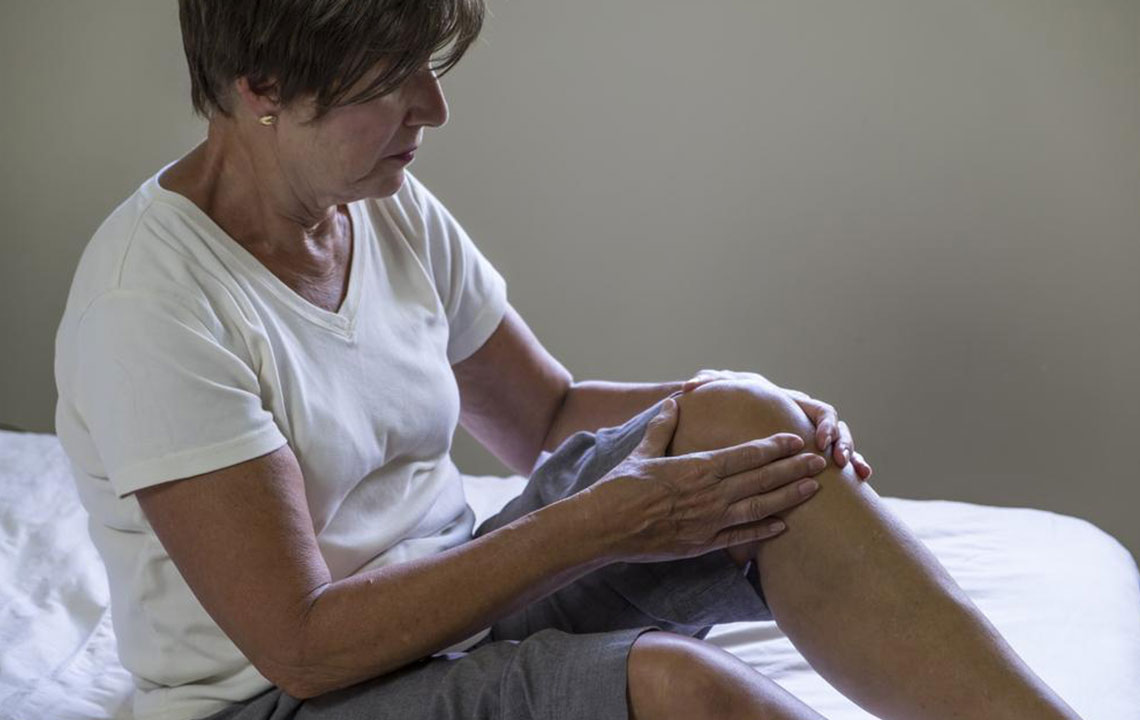Tips to Treat Knee Osteoarthritis
Osteoarthritisis a condition that is a result of wear and tear of the natural cushioning between joints. In this case, bones of the joints closely rub against each other since the cartilage has become weary its shock absorbing capacity is reduced. This close rubbing without the cushioning results in stiffness, swelling, pain and bone spurs.
Although osteoarthritis of the knee is age-related, it can affect the young too. The degenerative process can be hereditary in some cases. It can also result due to infection, injury or obesity. The Arthritis Foundation states that more than 27 million people in the country suffer from osteoarthritis, with women being more prone to this knee problem than men.

Causes of knee osteoarthritis
Although age is a most common factor, there are several other factors that increase the possibility of developing significant arthritis at a young age.
- Weight – When body weight increases, pressure on the joints also increase. Every extra pound adds extra weight on the knee, thus disturbing the cushioning.
- Heredity – Also known as genetic mutations, knee osteoarthritisis also experienced by those who have a history of osteoarthritis in the family and have inherited bone deformities.
- Gender – Women falling in the age group of 53 to 55 years are more prone to knee osteoarthritis than men.
Symptoms of knee osteoarthritis
Following are the common symptoms of knee osteoarthritis:
- Swelling around knee area
- Excessive pain when physical pain increases little better with rest
- Stiffness with feeling of warmth in the joint
- Crackly and creaking noise during knee movement
- Decreased or low mobility
- Creaking, crackly sound is heard when the knee moves
Diagnosis of osteoarthritis of the knee
Osteoarthritis diagnosis process begins with a physical examination. It is important to be well aware of family medical history in order to be able to explain the signs and symptoms. It is equally important to note of the scenarios in which pain becomes worse and unmanageable. Specialists also recommend a series of tests including X-rays, magnetic resonance imaging scans, etc.
Knee osteoarthritis treatment
Relieving pain is the first goal of the knee osteoarthritis treatment. Following are advised for an effective knee osteoarthritis treatment and to aid mobility.
- Weight loss – As discussed earlier, every extra pound puts extreme pressure on the muscles around knees. Therefore, getting rid of extra weight helps in decreasing knee pain resulting from osteoarthritis.
- Exercise – Exercising affects the mobility of entire body. Physical movement not only helps in increasing mobility but also helps in keeping the joint more flexible and mobile.
- Alternative therapies – There are several topical creams available in the market containing acupuncture, capsaicin, or supplements that help in decreasing pain.
- Physical and occupational therapy – Physical therapies are best for people who have extreme difficulty in movement. A trained specialist is well versed with muscle strengthening exercises that help in increasing flexibility in joint.
- Surgery – Surgery is a good option if the above mentioned knee osteoarthritis treatments fail to ease the pain.
- Eat a balanced diet – Studies have revealed that there are several nutrients that help in easing symptoms of arthritis. Diet rich in omega-3 fatty acids, vitamin C help relieve pain. Experts state that balanced diet with wholesome fruits and vegetables help in decreasing pain caused due to wear and tear of muscle tissues
- Sleep well – Sleep is very important as it helps in coping up with the stress and pain caused due to arthritis. It is best to maintain a proper sleep cycle and to keep distractions away. If uncomfortable whilst sleeping, use in bed pillows or cushions to take the pressure off joints.
- Hot or cold packs – Hot compresses increases blood flow, thus easing pain and stiffness. Cold compresses, on the other hand, help in reducing swelling. It is advised to use both in order to check what is best suitable for the body.


